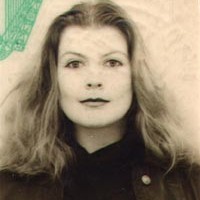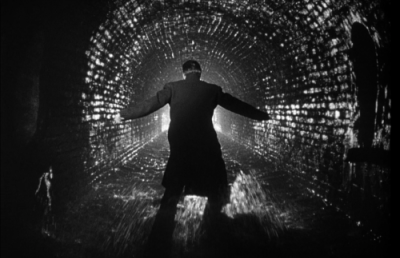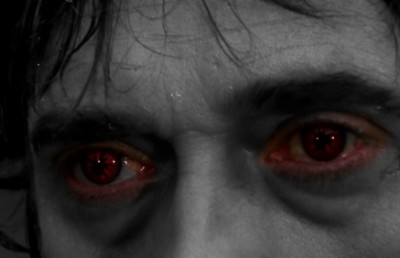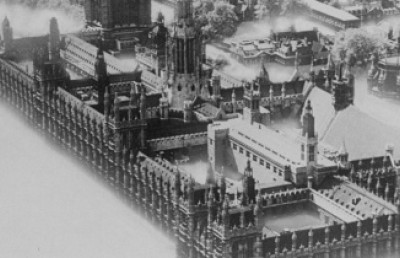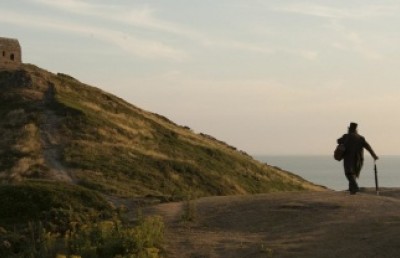The Trouble With Harry: The Third Man (1949), Part 1
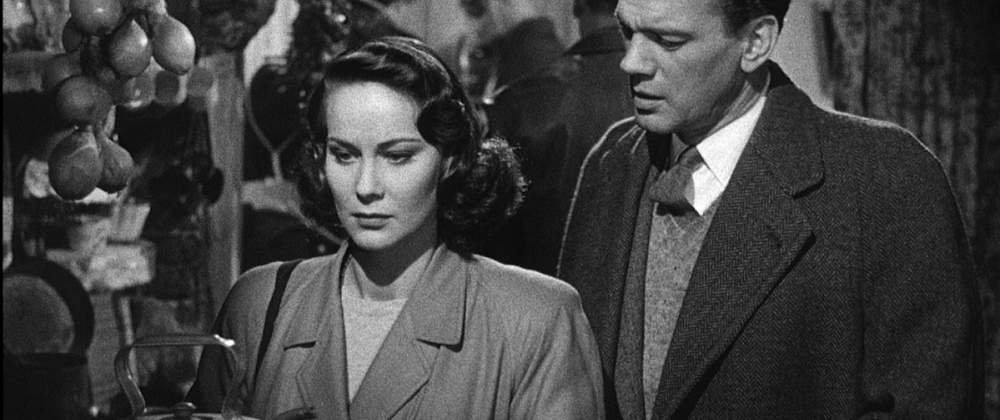
For Bonnie and Frodo
The past is another country
“Reality without imagination is only half of reality,” declared Luis Buňuel. The Best British Film of All Time had an inauspicious conception: it started life as a line written on the back of an envelope. Allegedly. For novelist, critic and screenwriter Graham Greene, fact was always interspersed with a goodly mixture of blind alleys, untruths, mischievous deceits and confusion. The origins of The Third Man (1949, Carol Reed) betray a tension between fact and fiction, occupying a liminal space echoing the city of Vienna itself after Word War Two, split between four occupying powers, the Austro-Hungarian Empire long a thing of the past; whilst poised on the frontier of the communist world. Greene described his screenplay as a comic thriller. Indeed in its depicting of an American pulp western writer seeking the truth behind his friend’s supposed death in Vienna its many levels of narrative hinge primarily on absurdist coincidence and storytelling devices familiar from such a literary source or ‘entertainment’ as he frequently labelled those novels of his centring on the world of suspense. However the project was born of the experiences of at least two of its creators as real-life practitioners of espionage. For them the past was quite literally another country.
It has been described as “a cracking mix of political thriller, weird romance, gothic mystery and black and white poetry” (Kemp and Frayling, 2011: 176). The project supposedly commenced when Hungarian-born, London-based producer Alexander Korda invited Greene to dinner one evening in late 1947. Korda was a character of immense inventiveness who had left his native land after being tortured and then guided to safety under the aegis of the British secret service. He was a canny operator whose fortunes rose and dipped with the sun. Greene had recently adapted the screenplay of his story of his own childhood fears, ‘The Basement Room,’ as The Fallen Idol which was realised by Carol Reed and Korda seemingly thought it would be apt to pair them up for his new project. He was now proposing a project to be set in present-day Vienna. In fact, as Michael Korda recounts, his uncle had been pursuing Greene for three years “to write an original screenplay about post-war Europe but Greene had been somewhat reluctant to do so despite the most tempting offers. Finally, exasperated by Alex’s insistence, he had written the opening sentences of a story on the back of an envelope during dinner one night…” (Korda, 1979: 217-218). That is the official version.
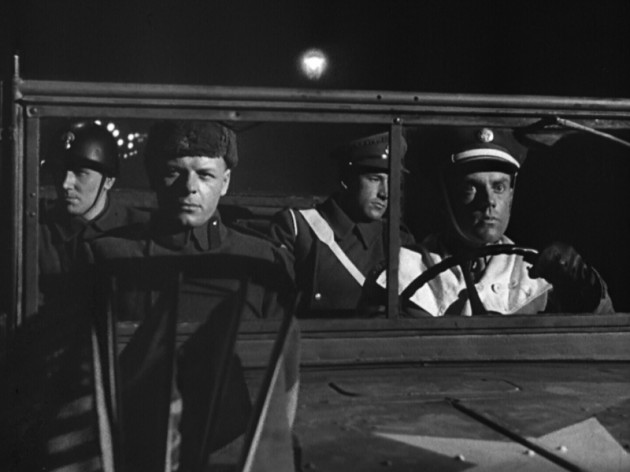
Four in a jeep
After the war, Vienna found itself under the control of the American, British, French and Soviet Union as the capital of a former Axis country (it had been liberated by the Russians). It had taken six months to arrive at the decision for full sectoral division following Roosevelt’s deep reluctance at American participation in occupation of the country as a whole. The International Zone was alternately controlled by each of the powers (the Four in a Jeep of movie lore). The Allied Commission for the country was based there and agreement was eventually reached to recognise the government which had been peremptorily installed under the stewardship of socialist leader Karl Renner. The situation was only agreed by all Four Powers if freedom of the press was reinstated along with the right to hold free elections. The occupation would not officially end for another ten years with the Austrian State Treaty when it was finally separated from Germany and a central administration put in place. In the meantime, all that Greene supposedly had for Korda was the aforementioned line written on the back of an envelope. It read: “I had paid my last farewell to Harry a week ago, when his coffin was lowered into the frozen ground, so that it was with incredulity that I saw him pass by, without a sign of recognition, among the host of strangers in the Strand. (Greene, 1950: Introduction).
This charming man
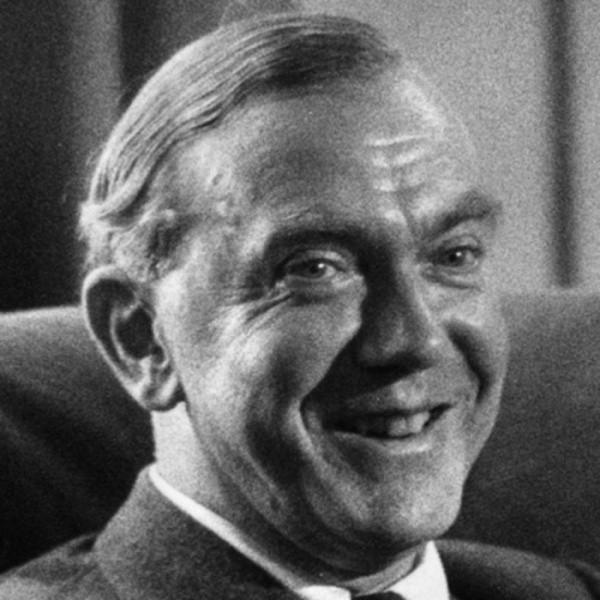
Graham Greene
In fact, Reed himself had already made overtures directly to Greene about the possibility of his directing a comic thriller from something Greene might write directly for the screen. The director was having difficulty eliciting a performance from the child star of The Fallen Idol, presumed it would be a commercial failure and then thought such a film would get him out of a hole. This occurred towards the end of 1947. At that point Greene had much more than a line on the back of an envelope, he had a complete story in mind and when he subsequently had dinner with Korda towards Christmas of that year, the project was immediately acceptable to the producer but the setting was yet to be agreed: Korda had business interests throughout Europe and in common with many in the business was experiencing the accompanying post-war difficulties in obtaining income from production and distribution in states where monies were frozen.
Film production figures from the Encyclopaedia of European Cinema indicate that just one feature film was produced in Austria in 1945 and three in 1946; these numbers increased to 13 in 1947, at the time that Greene was dreaming up his fable; then the figure almost doubled to 25 in 1948 when The Third Man was on location in Vienna, the same the following year; and in 1950 there were 15 films plus 2 co-productions; while in 1951 there were 23 films produced along with 5 co-productions (As quoted by Nowell-Smith, et al., 1996: 158).
As usual, British cinema was in a state of crisis. Michael Korda explains:
We were in the middle of something that was called ‘The Great Anglo-American Film War,’ which had been caused by the British government’s decision to tax the profits of American movie companies in England by imposing a heavy customs duty on films imported from America. Once again, the British government was reacting to the tremendous outflow of dollars brought about by the British public’s filmgoing habits, which were now costing almost $75,000,000 a year of precious hard currency. The American movie companies, which generally considered themselves to be sovereign states at least equal to the United Kingdom in power, had reacted with a boycott – they refused to send any films to England until the duty was lifted. The British government, already shaken by the concentrated fury of the British filmgoers, who were outraged at being deprived of American movies, urged the British film industry to expand production to fill up the gap with native product. Reversing their roles for once, Rank rashly plunged ahead with plans to spend nearly 10,000,000 pounts on feature films in one year, while Alex lagged behind, announcing merely a 5,000,000–pound production program, while actually expanding the number of films in production to a relatively modest degree.
Modest or not, it was to prove a mistake for both men. The British government, reacting to the pressure of a public which behaved as if it had been deprived of bread, caved in to the Americans, and the British cinemas were soon swamped by the sudden flood of American movies re-entering the British market (Korda, 1979: 219).
The National Film Finance Corporation was created by a sympathetic Labour government to aid with the industry’s post-war rehabilitation. The original Film Finance Company had powers to borrow £2.5 million for independent producers (Swann, 1987: 133). By March 1949 when the NFFC replaced it, The Third Man would be a beneficiary of its policy to contribute end money through distribution companies albeit the American side was controlled by a deal with David O. Selznick (Street, 1997: 16). As Paul Swann points out, “many people opposed lending money to Rank and Korda on the grounds that this would be merely ‘refinancing failure,’ yet there was also a widespread awareness that these two producers had in some ways taken the biggest risks on behalf of the film industry. This posed a real quandary for the government …” (Swann, op.cit.: 133-4). Korda’s attempt at a post-war spectacle, Caesar and Cleopatra (Pascal, 1945), had proven a spectacular failure yet he had been one of the first to attempt to break the American market with British product: The Private Life of Henry VIII (Korda, 1933) was a great success and an example of his credo in the creating of ‘international’ films. As H. Mark Glancy points out, it proved to Korda the importance of a foreign perspective in British cinema (Glancy, 1999: 73). Korda’s nephew Michael recounts in his family memoir that it was by now too late for him to reverse his credo, despite the success of “less ambitious films like The Third Man, An Outcast of the Islands and The Sound Barrier” (Korda, 1979: 181). He says, “as a token gesture toward the government’s refinancing of British Lion he had thought it prudent to remove the words ‘Alexander Korda presents …’ from the titles of his movies – henceforth Big Ben would chime without his name superimposed on it. All the same, Alex felt the need to make his position better known to the British public, who were now financing him, however indirectly, and his name began to appear with more frequency in the popular newspapers, particularly the Daily Express owned by his old friend Beaverbrook… He announced to the readers of the Express that he was no longer ‘a producer, but an administrator’ and promised massive economies in film making, though as one observer of the industry was to point out, the only economy Alex could think of when questioned was that a cheaper brand of toilet paper had been found for use in the studio” (Korda, 1979: 226-7). Part of his publicity drive was an article in which he sought to dissociate himself “from the ‘money men’ who had brought the British movie industry to its knees and were now looking to the Treasury for help; it was more expedient for him to join ‘the craftsmen in the studio, as a simple maker of films who is passionately interested in his craft” (Ibid.). He would become the first major borrower from the NFFC on behalf of his distribution company, British Lion Film Corporation. He loaned most of the funds to his own production company – London Films, the producer of The Third Man (Swann, as before).
Who is the third who always walks beside you?
As Michael Korda remembers, “there was no writer Alex admired more than Graham, and few people he liked more – a feeling which was reciprocated on Graham’s part, perhaps because they both had a sardonic temperament. It was altogether natural that they should share the same fascination with the mysterious situation Graham had [allegedly] created on the back of an old envelope, and which was to become, after innumerable meetings, many different versions and a blizzard of memos from David Selznick (who was putting up a part of the financing and arranging American distribution), the plot of The Third Man” (Korda, 1979: 218).
Greene signed a contract with London Films in January and a few weeks later travelled to Vienna where Elizabeth Montagu represented Korda and introduced the writer to people she thought would interest him and provide information for the writing of the screenplay. He stayed behind the city’s Opera in the Sacher Hotel, the official billet for the British Army and was asked to do a lecture for the British Council, an unhappy experience which he plundered for the screenplay’s centrepiece. He befriended Major Galloway, in whose charge the British Army was. Montagu had Greene meet Peter Smollett, correspondent for The Times. Montagu wasn’t aware of it but the men knew each other. Greene had been involved in espionage for the British intelligence services from an early age —it was the family business, as Peter Wollen has it (Wollen, 1999: 18); as an Oxford undergraduate he had spent time in both Ireland and Germany. Greene often referred to spying as ‘a racket’ (Shaw, 2006: 28-9) and during World War 2 while employed by MI6 (Secret Intelligence Service) in Section V (counter-espionage) he reported to Harold ‘Kim’ Philby, who would become a lifelong friend. Smollett, or Smolka, as he had been known, was likely the only other person along with Greene who knew that Philby was ‘The Third Man,’ a double agent and member of the Cambridge Five who with Guy Burgess and Donald Maclean would become infamous for their treason as KGB spies, exposing the activities of the British Foreign Office and MI6. (“Smolka!” is in fact the order given to the driver by Major Calloway when he is taking Holly back to the city after Harry’s funeral.) Smollett/Smolka had been acting for the Ministry of Information’s Soviet unit and was understood to be a mole. He and Philby had operated a press agency together. He may have been the source of Korda’s plan to make a film in Vienna in the first place.
Korda himself was believed to be operating for MI6 although this is disputed in some accounts (Glancy, 1999: 64; Higham, 1994: 268). Much of this speculation arose from That Hamilton Woman (Korda, 1941), a favourite with Churchill and an aggravating factor in the producer/director’s obtaining funds from Hollywood given its avowed propagandistic intention to change the neutral stance of the United States government, which approved the Lend-Lease bill upon the film’s release (Glancy: 111). However as Michael Shelden’s investigations discovered when he was writing Greene’s biography, the author was probably reporting to Korda in the early years after the war – Korda being his contact in SIS (Wollen, 1999: 18).
There is then a complex interplay of fact and fiction as Greene would deploy them in equal part, based to some extent on his tours of the city in 1948. The character of Harry Lime evolved from a combination of people – Greene himself (hence the name); the fictional character, Pépé le Moko; Kim Philby, whose given name was Harold, and who was Greene’s supervisor until 1944; and the plotline concerning a citywide racket in diluted penicillin may have arisen from another intelligence contact, Charles Beauclerk, who apprised Greene of the ‘Underground Police’ who patrolled the sewer network that crisscrossed the city, undivided by the Four Powers and therefore undetected by checkpoints (Wapshott, 1990: 208-9).
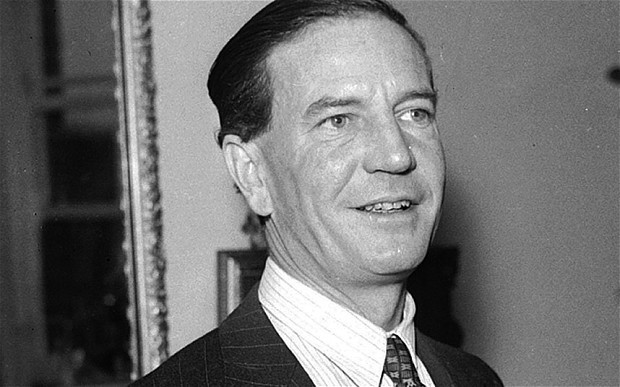
Russian Spy, Kim Philby
Linda Seger avers that when adapting a true life story the screenwriter has to remember that “a life defies cinematic neatness and creates difficulties for anyone choosing which story to show” (Seger, 1992: 49). And, as Howard and Mabley tell us, “specificity in the world of a story derives from two sources: the nature of the central character (in most films) and the nature of the storyteller” (Howard and Mabley, 1993: 27). Seger advises having a central incident, a clear climax, sympathetic main characters, a short period of narrative time, a strong ongoing relationship between two principal characters, and a rising dramatic line (Seger, op.cit. 53-4).
As an alter ego to Greene, Holly’s instinct is to transform fact into fiction, just as Greene did in writing the text: so it becomes a plot within a plot within a plot, a profusion of inbreeding. Greene is hired to write a film set in an occupied city (a script which he has more or less already completed); he travels to Vienna and meets a man whom he claims not to have known, Peter Smollett/Smolka, who shared his acquaintance with Kim Philby, whom they both know is ‘the third man’; he adapts Smollett’s stories, uncredited, as his own; he fabricates a character called Harry Lime loosely based on Philby (and himself, and a cinéfictional underworld character) who has a lover in trouble with the Russians (Philby married Litzi Friedmann in 1934); then he creates another character, an English writer of westerns called Rollo/Holly Martins aka Buck Dexter, who goes to Vienna, looks up his old friend who appears to have died and fabricates a story in which he creates a heroic role for himself based on another scenario, situated elsewhere, in a book he’s already written … Greene delivered the novella to Korda in late April 1948 when the Marshall Plan was announced. The Cold War had begun. It would be fought not with guns but with goods.
Philby’s career, as Charles Drazin describes it, has the same shape as that of Harry Lime. He describes the film as “the ultimate coded message” (Drazin, 2001: 146-151). Philby’s memoir, to which Greene contributed the foreword, concludes with the words
… I was baptised the hard way, in Nazi Germany and Fascist Spain, where a slip might have had a consequence only describable as dire (Philby, 1979: 180).
In his foreword Greene poses the question:
Who among us has not committed treason to something or someone more important than a country? In Philby’s own eyes he was working for a shape of things to come from which his country would benefit (Philby, 1979: 7).
Not quite a treatment (there were substantial changes in the script) nor a spinoff, the novella has the unique position of being a literary work written for the screen yet a piece of authored literature independent of and somewhat different from the finished film. As a commentator in the 2012 film Dangerous Edge avers, Greene’s work was in any case remarkably cinematic due its dependence on external action. The novella is told from the point of view of Galloway, a major in the British army. He meets Rollo Martins aka western writer Buck Dexter, a fellow Englishman, newly arrived in Vienna to join his friend Harry Lime, another Englishman, who has apparently been knocked down by a car and killed. He persuades him that Lime is a racketeer and runs him as a spy and goads him into killing his best friend.
Between 02 March and 04 April 1948 Greene wrote the script in Italy. On 14 May Korda and David O. Selznick entered into a contract to cooperate on this and another three productions. Greene returned to Vienna in June of that year. He worked there on the script with Reed. The city had already begun to change under the impact of reconstruction, as Nicholas Wapshott’s account relates:
When Reed and Greene travelled to Vienna in July to look for locations, Greene was appalled to find that so much renovation had already taken place that the world he had so vividly described was gone. The snow and ice had, of course, melted away. But the black-market restaurants which used to offer illegal, barely-nourishing food were now legally offering sparse but edible meals. The rubble in front of the Café Mozart had been cleared away. The city was gradually getting back to normal. Greene kept saying to Reed: ‘But I assure you Vienna was really like that – three months ago (Wapshott: 212).
The Korda brothers also went to the city in June 1948 to prepare for the location shoot. After completing the draft screenplay, Greene would sign an exclusive agreement with London Film Productions Limited on 20 July 1948 “to render… his exclusive services as a Writer for the purpose of the writing and compiling of a screen play to be based upon the short story entitled ‘The Third Man’ by the Author including either alone or in conjunction or collaboration with any other person or persons appointed by London Films the creating compiling or writing of original scripts and/or treatments adaptations continuities dialogues scripts and other literary matters suitable for the production of a cinematograph film.” The contract was to commence 15 June 1948 to continue for 5 weeks; Greene would be paid £1,750. His credit would be such “as he may be entitled to receive in accordance with the provisions of an Agreement dated the last day of January 1948 and made between the British Film Producers’ Association and the Screen Writers’ Association or any other agreement between those two parties in force at the time of the completion of any film incorporating the products of the Author’s services hereunder” (Carol Reed Files, Special Collections, British Film Institute). Greene was retaining the rights in the original story.
Between 08 and 19 August 1948 Reed and Greene travelled to California to meet Selznick and discuss the first draft scripts. Accounts of their meetings are highly comical but Sezlnick’s work heightened tension in the screenplay and improved several aspects of its characterisation. Selznick’s contributions were principally to strengthen Anna’s character; to switch Tyler from being an American heavy to being the Romanian, Popescu; and to the ending whereby Anna would leave Holly in the lurch. (Greene wasn’t present at that meeting with Reed and Selznick and wrongly attributed the idea to the director). Crabbit was conflated from two characters in the novella and the first draft script. Harry and Holly were both now Americans instead of Englishmen. The film’s opening city montage was shot a few months after production had moved to Isleworth and Shepperton (where a second unit was shooting, at Welles’ insistence) by lighting cameraman Hans Schneeberger and explained Vienna in a montage of icy attractions to the otherwise ignorant viewer. This was another suggestion made by Selznick and is crucial to establishing a time and a place and of course a mood. He made the point that seeing a corpse in the Danube would bring home the danger of such a location.
In a memo dated 16 October 1948 to his foreign coordinator Betty Goldsmith, he wrote of the 20 September draft script:
1) It is basically a very good script and in Reed’s hands should make a very good picture;
2) It is, as Korda, said, a great improvement over the prior draft; for this in modesty, I can take bows, because most of these improvements are due to their following a large percentage of my changes …
3) Despite the improvements, it is not satisfactory from the standpoint of the
price of the picture or its acceptability to American audiences …
4) It is absolutely essential that there be an American writer on the job at once… who can make the dialogue acceptable from an American standpoint, even if it is not as good as it should be. Presently the dialogue is in many cases so ludicrous, from a standpoint of American characters being presented to American audiences, that the picture would be kidded to death by our gallery audiences … I certainly am not going to insist upon lots of little detailed things with a man of Reed’s understanding and ability; but on the other hand, I certainly am going to insist upon certain basic things on which I spent many, many long hours of wrangling in order to get Reed’s and Greene’s agreement; thus, for instance, the script is written as though England were the sole occupying power of Vienna, with some Russians vaguely in the distance … and, just to make matters worse, the American hero apparently is completely subject to the orders and instructions of the British authorities, and behaves as though there were no American whatsoever among the occupying powers, nor any American authority, and indeed as far as this picture is concerned, there is none. It would be little short of disgraceful on our part as Americans if we tolerated this nonsensical handling of the four-power occupation of Vienna … I went through this at the greatest length and in the greatest detail with Reed and with Greene, and come hell or high water, I simply will not stand for it in its present form… (Behlmer, 1972: 399-400)
Selznick’s suggestion that an American writer be brought on board to firm up the dialogue was taken seriously – according to his memos he never actually knew, but Reed did exactly that, with writers hired to ‘Americanise’ the dialogue and improve some story construction, Mabbie Poole and Jerome Chodorov going uncredited. Welles, infamously, contributed dialogue to the film on the set. Reed’s contributions also go uncredited.
Fish out of water
The film begins with the famous voiceover on a montage of the city frozen by snow and ice, adapted from Greene’s treatment, and voiced in the UK release version by the director Carol Reed: “I never knew the old Vienna ….” The story opening proper echoes that of another Selznick production, Shadow of a Doubt (Hitchcock, 1943) when Holly Martins (Joseph Cotten) disembarks from a train with steam billowing around him. He is asked to identify himself to an American MP (military policeman). He arrives at Harry’s apartment house in central Vienna to be told by the porter, Karl (Paul Hoerbiger) that he is ten minutes too late and he hurries by taxi to Harry’s burial as the coffin is being lowered into the ground. He is offered a lift back to the city by Major Calloway (Trevor Howard) and they drive past a woman whom we will later discover is Harry’s lover, Anna Schmidt ([Alida] Valli).
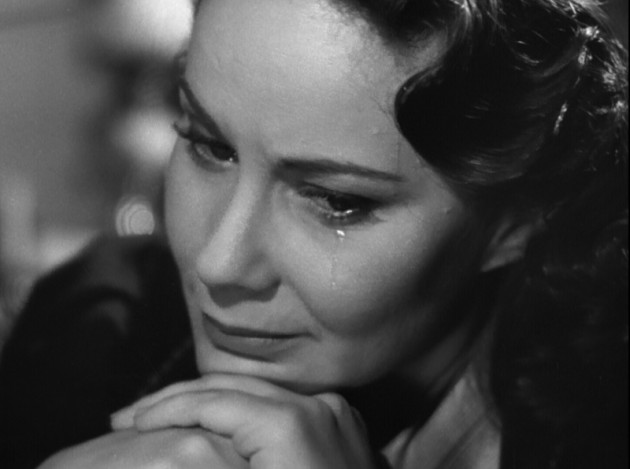
Alida Valli as Anna Schmidt
Holly admits that Harry is his best friend and has been since they met at school, where “I was never so lonesome in my life until he showed up.” He’s so broke Harry paid for his ticket. Calloway identifies in Holly a dangerous naïveté and encourages him to leave town. As Raymond Durgnat states, “It’s Trevor Howard, as a British army officer, who provides the necessarily harsh moral realism, to hold back the forces of chaos and black night “ (Durgnat in Murphy, 2001: 144). His view of Holly is a parallel with the point of view in the novella, in which Calloway is mainly a reactive character in relation to Holly’s actions but views him with contempt. In the novella Galloway/Calloway describes Harry:
Don’t picture Harry Lime as a smooth scoundrel. He wasn’t that. The picture I have of him on my files is an excellent one: he is caught by a street photographer with his stocky legs apart; big shoulders a little hunched, a belly that has known too much good food for too long, on his face a look of cheerful rascality, a geniality, a recognition that his happiness will make the world’s day (Greene, 1950: 306-7).
The wild wild western frontier town
“Best friend I ever had,” says a drunken Holly. “That sounds like a cheap novelette,” retorts Calloway. “Well, I write cheap novelettes.” Holly’s mentioning of his own The Lone Rider of Santa Fe and Death at Double X Ranch (or ‘raunch’, as he re-pronounces it for the Brit’s benefit) both swipes at the notion of the Cold War and tips the hat to the nature of the film – storytelling, playing with the tropes of pulp fiction but with a serious underside that involves violence, territory, power and the meting out of justice. It is also about East Vs. West. As Fay and Nieland point out, this film and A Foreign Affair (Wilder, 1948), shot before it (partly in Berlin), “connect a certain lawless frontierism in the occupied territory equally to the lingering effects of Nazism and to the presence of American soldiers whose moral, democratic rectitude is undercut by their participation in shady deals and black marketeering” (Fay and Nieland, 2010: 48). (In the original novella Greene is far more wary of the impact of the Americans’ presence and particularly his Colonel Cooler, who does not appear in the film.) It might also be interpreted as a caustic comment on the teams producing the film – Korda’s Hungarian ethos posited against David O. Selznick’s American praxis. It might even allude to the nature of mythmaking. It also acts as a catalyst for the action to spin in another direction. Holly expresses his contempt for sheriffs, Calloway tells him that Harry was a racketeer. He tells Holly he can board a plane and leave the city the following day. Holly’s drunken swagger is exposed by his inability to react to a cross-hook by Paine (Bernard Lee) after he attempts to take down Calloway. “Written anything lately?” he asks, helping him off the floor. As Palmer and Riley point out, it is a “parody of a Western bar fight” (1980:16). In the end, films noirs “are essentially westerns on the street” (Cinefile: Dark and Deadly Film Noir). [And the story’s structure bears a superficial resemblance to Ride The Pink Horse (Montgomery, 1947), adapted by Hecht and Lederer from the Dorothy B. Hughes novel, which is set in Mexico.]Who is the third who walks always beside you?
Paine introduces Holly to Crabbin (Wilfrid Hyde-White) of the Cultural Section, attempting to quiet a woman whom we assume to be his mistress, and he is mistaken for a literary type and persuaded to give a lecture on contemporary literature for the purposes of propaganda. After receiving a phonecall from ‘Baron’ Kurtz, he asks Paine (an established fan) if he’s read The Lone Rider of Santa Fe, which is “about a man hunting down a sheriff who was victimizing his best friend.” He announces his attention to go after ‘your Callaghan’ the same way. “Sounds anti-British, sir!” Paine declares to Crabbin. There then commences the film’s first major scene sequence structured around Holly’s confronting the problem of Harry’s death.
‘Baron’ Kurtz (Ernst Deutsch) identifies himself to Holly at the Mozart cafe with a copy of The Oklahoma Kid, a gift from Harry. We see the book cover in close up. Kurtz congratulates him on his capacity to create tension. “At the end of every chapter you are left wanting to know what happens next,” he purrs. (Holly might write cheap novelettes but at least they’re page-turners.) Kurtz gives Holly his account of Harry’s death and shows him precisely where it occurred, outside his apartment block. The porter Karl (Paul Hoerbiger) watches whilst sweeping the pavement. Kurtz tells Holly that the other man, Popescu, is out of town. He tells him he himself lives in the Russian sector but works at the Casanova nightclub. Anna can be found at the Josefstadt theatre. Kurtz is satisfied with Holly’s reaction to another good story, well told and congratulates him once again on The Oklahoma Kid, spinning us into another phase of the action. “I’m so glad I’ve met the master of suspense.”
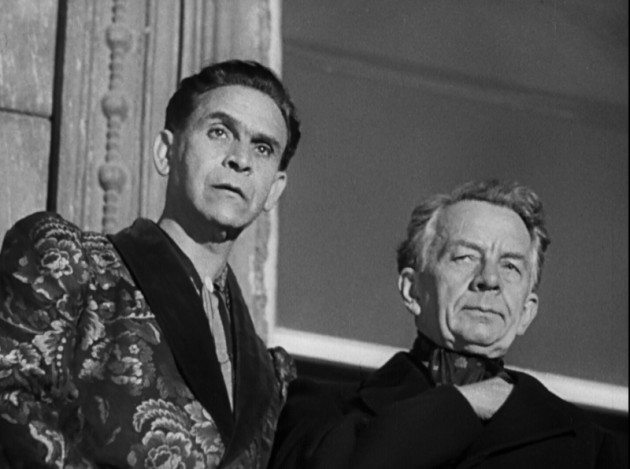
‘Baron’ Kurtz (Ernst Deutsch) & Popescu (Siegfried Breuer)
At the hotel Paine tells Holly that his aeroplane ticket is ready but Holly says he’s not leaving. That evening he meets Anna Schmidt at the theatre where she is acting in a light comedy specifically created for the film. Her occupation is of course intrinsic to her role as player in this drama, creating a distance between the illusion of performance and participation. She tells him that Harry’s doctor, Winkel, was there and that at the inquest his driver was cleared of any blame. “Harry always said he was a good driver.” It is she who creates doubt in his mind by asking the question, “I wondered about it a hundred times, if it really was an accident.” This line is uttered precisely twenty minutes into the running time and turns the action around. Holly now has a quest of a different nature. Anna’s role was expanded from that described by Greene in the novella, and Sarris says that she joins “Reed’s gallery of fatalistic heroines who ask nothing of life but that it shelter the men they love” (Sarris, Oct 1957: 12; 30). Calloway manipulates Holly and as Sarris claims, “retains his contempt for Martins even when he is appealing to the American’s conscience” (Sarris, Oct 1957: 12). That mocking tone is shared by Anna, who ignores Holly’s instruction not to hand over her (faked) passport) to the Major. Holly’s narrative is constantly ironised by the people he meets. Anna really belongs to the Russians, she tells Holly, since she is not Austrian but Czechoslovak. Calloway advises Holly to “leave death to the professionals” when he tries to persuade him that Harry might have been murdered. “Mind if I use that in my next western?” quips Holly. The constant untranslated German yammering of the neighbour wandering around the building clad in a quilt reinforces Holly’s sense of being a stranger in a strange land.
There was a third man….
At this point in the novella, told from Galloway’s point of view, Greene writes: “As I see it, turning over my files, the notes of conversations, the statements of various characters, it would have been still possible, at this moment, for Rollo Martins to have left Vienna safely. He had shown an unhealthy curiosity, but the disease had been checked at every point. Nobody had given anything away. The smooth wall of deception had as yet shown no real crack to his roaming fingers. When Rollo Martins left Dr Winkler’s he was in no danger. He could even have visited Cooler at this stage without trouble. No one was seriously disturbed. Unfortunately for him – and there would always be periods of his life when he bitterly regretted it – he chose to go back to Harry’s flat” (Greene, 1950: 267). Back at the apartment building, Karl, the porter, describes to Holly and Anna what he saw from the window where he observed Harry’s accident. “He can’t have been alive, not with his head the way it was,” he tells him. Then the story ratchets up a notch when he says: “There was a third man … he came later… I didn’t see his face… he might have been just anybody.” The phone rings and Anna answers but nobody speaks.
They are met at Anna’s apartment building by her neighbour (Hedwig Bleibtreu) who shouts that the police are upstairs. We see the weird manchild, whose first entrance is marked by a ball bouncing into Harry’s flat. Anna is then handled by the British who hand her passport to the Russian liaison, Brodsky, for examination. She claims to know nothing about Harbin, a medical orderly.
Dr Winkel greets Harry tentatively at his apartment and he is accompanied by the giveaway of Kurtz’s miniature dog whom he claims as his own. He corrects Holly with a contemptuous glare when Holly mispronounces his surname with a soft ‘w.’ “I cannot give an opinion,” he states of Holly’s inquiry, “I was not there.” He explains that his opinion is limited.
Holly meets Popescu (in a change to the American character in the novella) at the Casanova Club where they are introduced by Kurtz, playing violin “to make ends meet,” he explains to Anna. “It was a terrible thing … I can’t help blaming myself,” Popescu pronounces. “He saw me and stepped off the sidewalk to meet me.” Popescu complains of acid when Holly asks him about a third man. Holly asks him if he knows Harbin [this suggests a continuity error in the film.] He says the porter told him about a third man. “Everyone ought to be careful in a city like this,” Popescu responds ominously.
As Linda Palmer asserts: “Well-crafted supporting characters allow the audience to see a hidden aspect of the leading character, or help to clarify the leading character’s motivation. They can convey exposition in an entertaining way” (Palmer, 1998: 109). Everyone Holly meets is defined by their relationship to Harry Lime. The strategy that Greene employs here is to use the cast of supporting characters to tell Holly what he wants to hear and send him in a different direction; it puts him on the wrong track yet the inconsistency and dead ends make him insist upon returning to finding the real story, not just what he’s been told. It is all so much embroidery, but very pleasantly so, and reminds us that this is always a film about storytelling and role-play. David Thomson states: “Joseph Cotten and Holly Martins are from a writer’s forgotten drawer. But Trevor Howard, Valli and the wolfish Viennese faces tell the truth” (Thomson, 1994: 622).
Night and the city
In the context of a cycle of films made in the occupied cities of Berlin and Vienna, The Third Man relates to ideological positioning through a combination of authorial intention and the role of the film industry itself as (potentially) conflicting determinants in filmmaking. We understand the concept of influence as being directly political and economic; through subtler mediations of hegemony and economic pressure; and a varying combination of both. The occupied city as a space in which liminality transcends notions of identity is brought to the fore in this borderzone stuck between East and West, a place of transitions, mobilities and black marketeering in which new concepts of nation are problematised by social, cultural and political prejudices. Shaw states that “the general absence of feature films relating to East-West tensions can be attributed mainly to the commercial pressures for entertainment of a ‘light’ nature during the post-war austerity years, but censorship played a part too” (Shaw, 2006: 26). Korda himself was president of the film section of the Society for Cultural Relations with the USSR in 1947 and therefore was keen to establish financial links with the Communist state. The Third Man might be claimed to be the first British film to deal with the Cold War. It might therefore be inferred, as Tony Shaw does, that Greene’s reconnaissance trip to Austria (and Czechoslovakia) on behalf of Korda might have served as useful cover for activities of a more subtle diplomatic nature (Shaw: 28). The film had the services of Sascha Films in Sievering, north of the city, run by Korda’s old friend, Karl Hartl, who had continued working throughout the war under the Nazis and yet also produced work for Churchill: it would appear that he, too, had connections in intelligence. Sascha provided location expenses and equipment in exchange for distribution rights on some of Korda’s old releases. As Michael Korda reminds us, “Alex had a genius for exploiting his old movies – from 1947 to 1949, he made over 1,000,000 pounds in Germany alone, taking advantage of the fact that the Germans had been cut off from most of the successful international films since 1933” (Korda, 1979: 226).

Valli (Anna) with Holly Martin (Joseph Cotton)
If the great films are those that find external elements that demonstrate and correlate the protagonist’s inner life, then The Third Man has an array of tropes that give us insight into the dilemma being experienced by Holly Martins: chief amongst them is the city itself. Odd Man Out is called ‘the definitive night film of a city’ in Reed’s oeuvre by Andrew Sarris (Sarris, Sept 1957: 32). Vienna is, typically of this cycle, a space for fluid, slippery, even unknowable, identities; morality is flexible and the post-war struggle for hearts and minds is laid out in a series of conflicts originating in a problem which results from the division of the city. After all, as Copjec reminds us,
When anything can mean its opposite, we are no longer able to proceed from assured principles (Copjec, 1993: Introduction).
If we think of environment as the meeting point of nature and culture, then post-war Vienna, with its remarkable architecture and bombed-out ruins, is registered as a place of flux, recorded by Greene in early 1948 with the precision and gleaming detail that such an embodied immersive experience yields.
Wollen notes of Reed that he “made one key decision early – there would be no Strauss, no waltzes in his film. That Vienna, the Vienna which could imagine itself at the centre of Europe, was gone for good. Reed’s Vienna is a crooked city, a city shot with tilted angles, a city in which the cobbled streets are wet and glistening as if from melted snow; a city in which a few beams of light cut through deep darkness, in which the shadows are all exaggerated. For Reed, who saw himself as a director who respected the script, this Vienna was essentially Greene’s Vienna. And for Greene Vienna was a no-man’s land, a city on the edge in which the old values were in ruins, a city with no future” (Wollen, 1999: 19). According to historian Brigitte Timmermann, the Austrian Tourist Board thought the film would be bad for Vienna. It became a cult film at local level because by 1950 the city had been cleaned up. The Viennese looked backwards to the Hapsburg Empire with a sense of true nostalgia and wanted to rebuild the past, not break from it. Once filming had concluded however, St Stephan’s Cathedral, burned down during the war, had been rebuilt. It was a national symbol. The conclusion of the film’s shoot coincided with the cathedral’s reopening and Reed left the arc lights so as to illuminate the magnificent symbol as a gesture of thanks on behalf of the crew (Speaking on BBC Radio 4, 2009).
Impossible angles
Thomson rightly refers to the film as boasting “one of the most intense atmospheres the screen has ever delivered” (Thomson, 1994: 622). Its texture arises from the interplay of sound and image, the tilted camera angles, the rain-slicked cobbles, the slanting light from apartments, the cluttered interiors and the rubble juxtaposed with the sleazy clubs and theatrical rococo. It is echoed in the complex fabric of the narrative coupled with the sound of speech and the competing metre, diction and syntax of the international cast of fascinating characters – the slow Virginia rhythms of Holly versus the clipped staccato of Calloway, Anna’s Hungarian pronunciation and the varying accents of Harry’s fellow racketeers. Then there is Harry’s own droll delivery, which dominates the film’s formal intent, despite his sparse presence. The rhythm and register of each character’s dialogue and intonation creates a veritable symphony of sounds, an affirmation in Korda’s credo of the international film. As Sarris states, “each actor supplies an appropriate vocal quality for the character he portrays. Cotten gives Martins a whining tone; Welles orchestrates Lime with the mocking rumbles of a hollow organ, and Howard endows Calloway with the nasal overtones of the cynic” (Sarris, Oct 1957: 12). The constant echo of footsteps tapping an insistent tattoo on the dark, rain-sodden cobbled streets creates a sinister undertow. The zither’s insistent chords create a pinging, zinging commentary on the unfolding drama, a permanent casting of doubt on what you see and what you hear. The score reinforces the narrative’s relentless caustic irony. It is the specificity of the aesthetic choices and their rhyming functions that creates such an indelible sensation. Against these mean streets Holly is cast as a western hero in his own mind, shifting from naïveté to intelligence and back again, rather like the genre itself, as Bazin would have it, confronting the barriers created by a half-decade of war, manned by real soldiers with a chaotic underground network actually beneath everybody’s scrabbling feet. Three crews shot 24 hours a day, with Reed keeping awake on Benzedrine (a habit shared with Selznick). Robert Krasker shot at night; Stan Pavey was in charge of the sewer unit; and Schneeberger was in charge of the day shoot. Back in Shepperton Studios, the most famous shot in the film, of Harry revealed in a doorway with a kitten, was done by John Wilcox’s second unit. It is one of cinema’s great entrances.
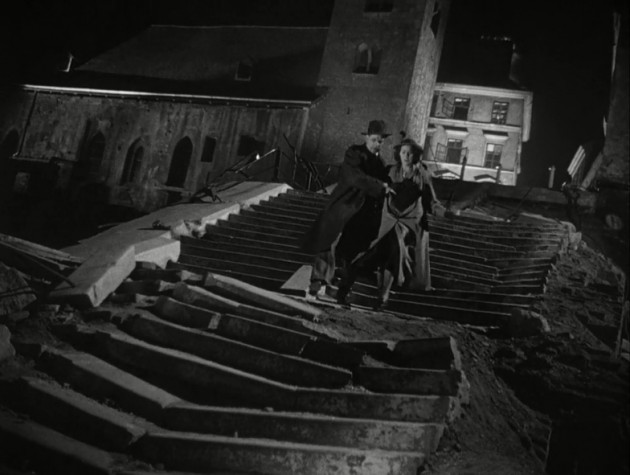
The ‘look’ (canted angles and foreboding shadows)
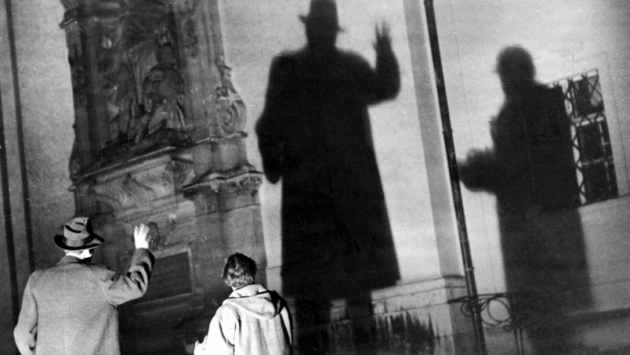
Genre
Greene described Pepé le Moko as “one of the most exciting and moving films I can remember seeing” (Greene in Taylor, 1980: 144). He believed it raised the thriller to a poetic level. Directed by Julien Duvivier and released in 1937, it remains a prototypical crime film, starring Jean Gabin as the eponymous rogue hero. The rights were acquired by Hollywood and it was remade twice – as Algiers (Cromwell, 1938) and Casbah (Berry, 1948). Ginette Vincendeau locates its importance:
… because it is key to the French film noir tradition of the 1930s and set the agenda for the policier genre that was to flourish after the war (Vincendeau, 1998: 8).
She continues that it “… both claims and transcends its pulp fiction material, and turns it into a powerful emotional statement on identity, desire and loss (Ibid.). Vincendeau concludes that the film “is the perfect blend of crime and romance, of sleaze and poetry…” (Vincendeau: 73).
Not only does The Third Man boast a similar, authoritative voice-over, setting up the tone of the film – and in this it echoes the assertiveness of Calloway’s narration in the novella; it is similarly coded in the documentary style with its location photography; it glamourises its rogue hero with the first half of the film building up his eventual phoenix-like rebirth as Orson Welles, analogised in his reference to the Renaissance, a speech famously improvised by the actor-director; and it is a shadowy half-lit paean to moral choices and fatal desires. Another similarity with the Duvivier work is also perhaps located in that the film as it “… offers an anthology of camera angles and movements, editing, lighting and music then in use in the best of the French cinema…” (Vincendeau: 11).
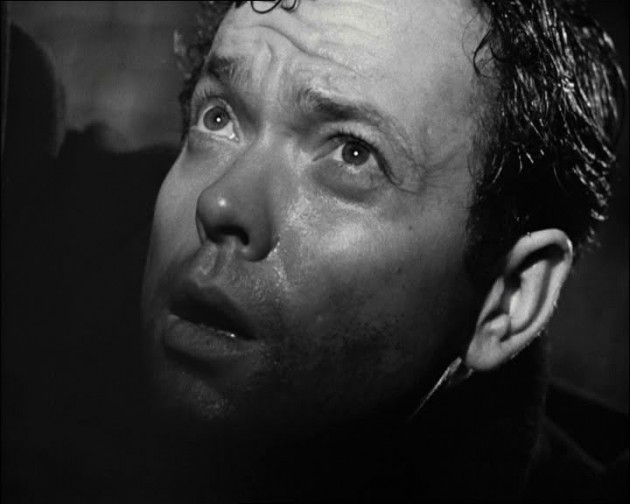
Locating Harry’s shadow on set
Vernet reminds us that film noir as understood to be a cycle of films originating in a combination of pulp fiction, the stardom of Bogart and visual style, was at its height from 1945-55, the precise timeframe in which Austria and Germany were under Allied occupation. (Vernet in Copjec: 1). It is more of a point of view than a genre, originating in a cycle of crime, gangster and thriller films from the 1930s, with stylistic elements derived from German Expressionism which became an economic necessity due to the privations imposed on production at the studios in wartime. It is no coincidence that this paranoid style was at its strongest therefore in the immediate aftermath of the war years when a sober reassessment of the foibles of democracy seemed to form the subtext to so many cinematic works. Barry Langford identifies the home of noir as “… the nocturnal metropolis as a labyrinth with the sexually available and aggressive women at its centre.” (Langford, 2005: 217). He says the noir hero is “a self-made man whose role is to expose the corruptions of a decadent ruling élite”(Langford: 219). Part of noir’s utilitarian function in this cycle of films, which focus on the unreal aftermath of the Holocaust, might be located in what Langford states is its “… critical emphasis on pathologies of masculinity” (Ibid.).
The Third Man boasts a plethora of such pathologies. The narrative paradigm of noir is the failure of the hero; the basic rule of friendship is – never rat on a friend. In this story, Harry is analogised with a rat, hence the sewer – however it is Holly who is the real rat, trying to impose order where none can exist, forging fiction from prosaic fact like his hero Zane Grey —was there ever a mythology so enlarged from such few mundane years of supposed conquest as that of the western? Thus we have a text in which genre is played against myth. Both forms of writing want to impose control, both proceed from a writerliness in which a dependence on order can be identified (Sinowitz, 2007: 410-411). Holly’s final, tragic action arises from the fact that he falls in love with his own story.
As Julian Petley points out, The Third Man was one of a cycle of British noirs (Petley in Barr, 1986: 111). He includes films such as They Made Me A Fugitive (Cavalcanti, 1947), No Orchids for Miss Blandish (St. John L. Clowes, 1948) and Brighton Rock (Boulting, 1948), also from the Greene oeuvre. This forms the link with the spiv cycle, a mutation in the crime film after World War 2 first identified by Murphy (1986.) Peter Wollen claims for this group of films that it “allowed directors to combine realism with melodrama, restraint with excess, to use Alan Lovell’s terms – or, to put it another way, to explore the darker, more sinister side of Britishness without losing touch with the lived experience of the street and the community? Didn’t these films perhaps lay the foundations for such works as The Servant (1963) and Performance (1970), with their own images of the working-class rake and the charismatic man on the run? In the final analysis, however, the case I want to make for the spiv film isn’t social, cultural or historical. It is an aesthetic case. The British cinema that interests me is a cinema which produces great films – films which are masterpieces” (Wollen, 1998: 22). He calls The Third Man one of the high points of the genre, “a spiv film transposed from London to post-war Vienna, with Orson Welles playing the fugitive spiv-racketeer Harry Lime, another beguiling and fascistic rake” (Wollen, 1998: 21).
In fact, the first time we meet Major Calloway at the cemetery he presents as a kind of spiv: clad in full-length leather coat and trilby, he could for all the world be a racketeer of the type he affects to despise. He is dressed this way presumably to fit in with the others making their obsequies.
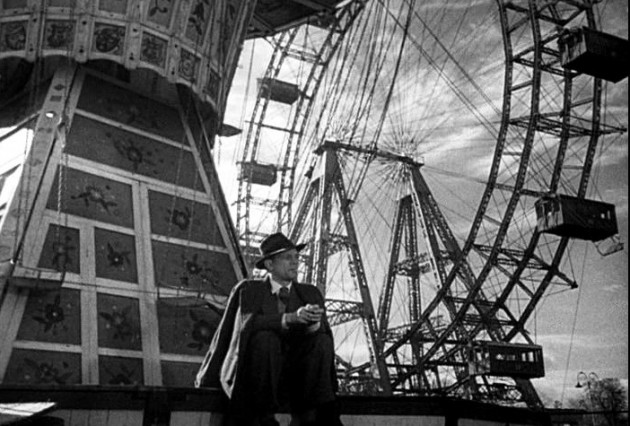
Like a wheel within a wheel
The shape of things
Emplotment is not limited to events, it is also a process through which a kind of identity is constructed.
There is . . . not just an emplotment of actions; there is also an emplotment of characters. And an emplotted character is someone seeking his or her or its identity (Ricoeur and Pellauer, 1995: 309).
Bordwell identifies the basic story structure as “… an undisturbed stage, the disturbance, the struggle, and the elimination of the disturbance (Bordwell, 1985: 157). In terms of Hollywood, Bordwell, Staiger and Thompson state that “classical films are especially likely to bare the central principle of causal linearity” (1994: 22). They define the classical Hollywood narrative in terms of “…at least two lines of action, both causally linking the same group of characters” (Bordwell, Staiger and Thompson, Op. Cit.: 16). They continue:
The tight binding of the second line of action to the love interest is one of the most unusual qualities of the classical cinema, giving the film a variety of actions and a sense of comprehensive social ‘realism’ that earlier drama achieved through the use of parallel, loosely related subplots…
Psychological causality, presented through defined characters acting to achieve announced goals, gives the classical film its characteristic progression. The two lines of action advance as chains of cause and effect (Bordwell, Staiger and Thompson: 17).
Because Greene’s work devolves upon external actions as expressions of internal dilemmas typically organised into three acts, it falls under the rubric of classic story construction. Bordwell, Staiger and Thompson say that
Understanding classical story causality takes us toward grasping how a classical film unifies itself… this unity is a matter of motivation. Motivation is the process by which a narrative justifies its story material and the plot’s presentation of that story material (Op.cit.: 18).
The ordering (or reordering) of story elements amounts to a narrative syntax around certain points which Ricoeur refers to as ‘emplotment.’ The screenplay’s central tension devolves on two questions, one for each half of the film. In the first half, we are repeatedly posed the question, what really happened to Harry? Whilst in the second, we find ourselves asking, what will Holly do? This tension constitutes the narrative spine and it is from this unified structure, deriving from the modern concern with the tension between order and chaos, that the entire story devolves. Referring to the interaction between story, event and emplotment, Paul Ricoeur writes that
… an event must be more than just a singular occurrence. It gets its definition from its contribution to the development of the plot. A story, too, must be more than just an enumeration of events in serial order; it must organise them into an intelligible whole, of a sort such that we can always ask what is the ‘thought’ of this story. In short, emplotment is the operation that draws a configuration out of a simple succession (Ricoeur, 1990: 65).
Emplotment is not limited to events, it is also a process through which a kind of identity is constructed.
There is . . . not just an emplotment of actions; there is also an emplotment of characters. And an emplotted character is someone seeking his or her or its identity (Ricoeur and Pellauer, 1995: 309).
Dancyger and Rush define structure as
… pattern. It may be made of anything that organizes our attention – a repeated line of dialogue, a recurrent situation, a musical theme, an external historical moment, a radio in the background, a return to the same location. The less structure relates to plot, the more formal it seems to be. The more external to the action, the more structure reads as the filmmaker’s voice (Dancyger and Rush, op.cit.: 175).
Dancyger then interprets structure as composed of four macro-elements which he says are three-act structure, plot, the character layer and genre (Dancyger, 2001: 43). Knitting these elements together in The Third Man is a complex interweaving of doubling, repetition, echoing, planting, payoff and visual and narrative symmetry. While Greene insisted that this was no propaganda exercise, the film eventually commits to a point of view above and beyond loyalty to a friend.
The battle of midway
According to Linda Cowgill, the midpoint sequence is a major structuring element in any screenplay. It is the ‘heart’ of a film, representing in any well-constructed film its emotions and concerns in microcosm. Cowgill defines it thus:
A midpoint links the action of the plot in the first half of Act Two (and the first half of the film) to the second half of Act Two (and the last half of the film). It is an incident or episode in the plot which culminates a line of action on one hand and, on the other hand, pushes the plot forward toward the second act climax. An effective midpoint is one that is active and dramatic, either solving a problem or crisis, or creating more of them. The midpoint often takes us to a surprise, reversal, discovery or new complication, at the same time strengthening the relationship between the first half of the second act and the last half. It does not have to come exactly at the halfway mark in a film, but it generally occurs somewhere in the middle (Cowgill, 1999: 29).
As we have seen, the film’s formal structure relies on narrative stratagems that are entirely self-reflexive. The strategy of the screenplay is to invoke storytelling itself, and particularly Holly’s novels, as a transitional device and plant to suggest a later payoff. The midpoint sequence commences in an actual transitional location –the Reichsbrücke, a suspension bridge, which as metaphor and motif (in a genre revolving around suspension of disbelief) places us directly in the narrative’s eye: Harry meets Kurtz and Winkel in a long shot with the bridges girders forming a naturally distinctive backdrop of crosses. Karl calls to Holly stating, “I am not a bad man. I’d like to tell you something. Come tonight. My wife goes out.” Anna is busy learning a new part, bringing us back into the thick swirl of stories that characterises the narrative’s design. She is not acting in a tragedy, she responds to his question. “I don’t play tragedy.” Then she calls Holly ‘Harry’. “It’s alright,” he tells her. “You might get my name right.” His name is his conversational gambit. As he approaches Harry’s flat a crowd gathers and the weird manchild’s accusations that he is responsible for the porter’s murder literally turn the tables on him and he is forced to become the fugitive. Like a spy, he sneaks into a cinema, away from the madding crowd led by the scary child.
Back at Sacher’s a taxi whirls him away to a forgotten appointment, no longer the author of his own fate, literally no longer in the driving seat of the story. The film’s philosophical discussion about the nature of storytelling occurs at the British Cultural Section gathering in front of an eager crowd. The lecture on ‘The Crisis of Faith in the Contemporary Novel’ develops into a consideration of Holly’s role in the unfolding mystery in Vienna and situates us in a debate about how far we’ve come in the story and what Holly’s intentions really are. “Do you believe in stream of consciousness?” “What author has chiefly influenced you?” “Zane Grey!” replies Holly. Crabbin makes a joke of his response, not realising it is true. “Mr James Joyce – now where would you put him?” “Is Mr Martins engaged in a new book?” asks Popescu as the audience starts to clear. Crabbin welcomes him as “a great supporter of one of our medical charities.” “Yes,” Holly responds, “it’s called The Third Man.” “A novel, Mr Martins?” continues his interrogator. “Yes, it’s a murder story. I’ve just started it. It’s based on fact.” “Are you a slow writer, Mr Martins?” he continues. “Not when I get interested,” Holly says. “I’d say you were doing something pretty dangerous this time,” announces Popescu. “Yes?” “Mixing fact and fiction.” “Should I make it all fact?” asks Holly. “Why no, Mr Martins, I’d say stick to fiction, straight fiction,” advises Popescu. “I’m too far along with the book, Mr Popescu.” “Haven’t you ever scrapped a book, Mr Martins?” “Never!” declares Holly. Popescu snarls “Pity!” and leaves abruptly. The meeting is officially closed.
This is a perfect summary of the narrative’s intentions, Holly’s situation and the structure of the film as a whole.
Dialogue
As Andrew Horton rightly points out, “It may surprise you how much of most films breaks down to a series of dialogue scenes between two characters” (Horton, 2004: 145). Michael Tierno reiterates,
Dialog is part of the action and gets its power from the plot, whose effect builds in a cumulative as well as linear way. Dialog forms story action and derives life and energy from the action it helps build (Tierno, op.cit.: 129-30).
Tierno continues: “…in even the most dialog-dependent script like My Dinner with Andre, the dialog is intrinsic to the action –to the plot, meaning, causality of the incidents and the dramatic unity” (131). In The Third Man every line of dialogue is intrinsically connected with pushing forward the theme and the action to the point where everything ultimately makes sense. The conversation with Harry which pushes the story into a new dimension doesn’t occur until after Holly follows his kitten to the doorway where he finally makes his first proper appearance.
Making good his escape from Popescu’s henchmen, Holly gets bitten by a parrot, a story that Calloway simply doesn’t believe after he muddles his way through the city’s rubble, down a tunnel and up a staircase to the police headquarters. “I told you to go away, Martins. This isn’t Santa Fe, I’m not a sheriff and you’re not a cowboy. You’ve been blundering around with the worst bunch of racketeers in Vienna, your precious Harry’s friends, and now you’re wanted for murder.” “Put down drunk and disorderly too,” drawls Holly. “I have. What’s the matter with your hand?” “Parrot bit me,” Holly says pathetically.
“These were murders,” explains Calloway trying to describe Harry’s racket. When Holly asks for evidence, Paine refers to The Lone Rider of Santa Fe once again, another reference to mixing fact and fiction. Calloway has Paine put on a magic lantern show and displays a slide of Joseph Harbin, whom they had forced to talk about selling his penicillin supplies to Harry’s gang. He disappeared a week earlier. A montage proceeds to use a magnifying glass, fingerprints, papers to sift through the case against Harry. “How could he have done it?” wonders Holly. “Seventy pounds a tube,” answers Calloway. We are now fifty-three minutes into the film.
_630_420_90.jpg)
Like a circle in a spiral
Patterns of association
The term ‘structure’ can be applied to the narrative configuration of emplotment; and the rhetoric of structure could be denoted as described: action (story or plot); character; dialogue; genre; location; theme; tone (point of view) and visuals. This, then, is the foundation of the identity of the screenplay. What makes The Third Man so effective is that Holly has to be challenged to become the decoy who then kills Harry. Lawson states that
It is the sometimes conflicting dynamic between what a character acknowledges to be his goal and his unconscious motivation that drives a story forward (Lawson, op.cit.: 168).
In other words it is the gap – the lack – between what the character wants and what the character needs that creates narrative motion. For Holly, motivation to kill his friend is his particular lack – and he has it gifted to him by Calloway. Whereas Aristotle’s analysis of drama focuses exclusively on plot and action, it is true to say that what grips an audience is character, a fact that Lajos Egri emphasises to expose the structural tenets of dramatic writing:
There must be something to generate tension, something to create complication, without any conscious attempt on the playwright’s part to do so. There must be a force which will unify all parts, a force out of which they will grow as naturally as limbs grow from the body. We think we know what that force is: human character, in all its infinite ramifications and dialectical contradictions (Egri, op.cit.: xvi).
He continues that “ …all that is required of a well-constructed premise: character, conflict, and conclusion” (Egri, op.cit.: 8). Holly’s great characteristic – and his flaw as perceived by Calloway – is his loyalty to his great friend. This ‘fatal flaw’ is turned to Calloway’s advantage when Holly is ‘turned’ (this is the film’s second turning point, triggering the end of the film) and becomes the fatal lure to Harry’s death. It is apposite to examine the role of all of these elemental contributions to the narrative’s construction in turn.
Action/plot
Critic Richard Schickel claims that
When we go to the movies we instinctively understand that ‘narrative and construction’ – the plot, to use the simplest possible term – is the voice of authority to which we are supposed to respond. In the vast majority of movies it dictates the development of the characters and it is what carries the moral. And it is, of course, the plot that is crucial to the development of the film from first to last; it is the subject of the treatment that is the first everyone connected with a movie argues about from first-draft screenplay through final cut; it is what the marketing department adapts as the basis of its ad campaign; it is what viewers tell their friends about; and, yes, it is what reviewers mostly review. For it is the aspect of a movie that is most readily reducible to a few well-chosen judgmental words (Schickel in Lopate, 1995: 559).
The pleasurable density of The Third Man derives from the warp and weft of its composition rooted in the strategies of storytelling (and Greene’s constant interest in loyalty and betrayal). Writer/director Philip Dunne declares, “in movie-making drama is action” (Dunne, 1992: 57). Each time someone mentions one of Holly’s western novels a new phase in action is triggered; Holly is mesmerised by the different versions of Harry’s death as regaled by his fellow racketeers; Calloway tries three times to persuade Holly of Harry’s life as a racketeer; a horrible lecture at the British Council (one in a series designed for propaganda purposes, as Holly is told) on the contemporary novel forms the fulcrum about which the entire narrative turns. The narrative is split into two halves based on the central principle organising the narrative’s tension: the first is posited on the question, what happened to Harry? The second around the obvious problem, where is Harry now? And the entire storytelling strategy rests upon the puzzle: what will Holly do?
Character layer
A protagonist (or hero, if indeed the protagonist is heroic) is the driving force of any story. In the Aristotelian formulation, ‘we are what we do.’ “Character,” he states, “gives us qualities, but it is in our actions – what we do – that we are happy or the reverse.” (Aristotle, 1920: 37) Whereas Aristotle prioritises plot in story construction (he calls it the soul of the tragedy), Lew Hunter reminds us that “character and plot must intertwine” (Hunter, op.cit.: 81-2). And, advises Lajos Egri, “If we wish to know the structure of conflict, we must first know character. But since character is influenced by environment, we must know that too. It might seem that conflict springs spontaneously from one single cause, but this is not true. A complexity of many reasons makes one solitary conflict” (Egri, op.cit.: 136).
The screenplay’s strategies are both time-honoured and highly effective. In the film’s first half, Harry is built up and talked about by everyone; as Welles said, all he had to do was to show up, like Mr Wu. Bazin describes how his “beauty, his archangelical radiance, gives him a halo or almost superhuman stature to start with” (Bazin, 1978: 125). Welles himself likened the character he played to Lucifer. Sarris describes him as
steeped in evil, but in some elliptical manner he becomes the protagonist of the piece. From the little we know of him we detect a man who has consciously embraced evil as the logical expression of the time and place in which he exists (Sarris, Oct 1957: 12).
Noël Coward had been mooted for the role but that notion was quickly dismissed; he later took on the role of the spymaster who recruits Alec Guinness in Our Man In Havana (1960), the third and final time the writing and directing team would collaborate. Cotton and Welles were memorably paired in Citizen Kane so they knew each other and complemented each other’s performance. Welles stated of Reed’s directing to the BBC: “Carol Reed, nobody ever loved acting more than he did…. Without the remotest feeling that he was imagining himself in that position or imposing himself. He was the real actor’s director. His joy was in your work, not in seeing something of his come to life. He was exceptional in that case” (Welles speaking on Arena, BBC.). Andrew Sarris claims that “Reed’s belief in moral responsibility and free will is more logically connected with the broadest outlines of his technique –the anthropocentric design of his images and his unusual reliance on the visual and emotional potentialities of his characters. It follows from stylistic necessity that Reed is probably the world’s most creative director of actors” (Sarris, Oct 1957: 30).
When they made Odd Man Out together, James Mason recalled of it that
… it was Carol Reed’s film. Not being a critic I cannot attempt to define its perfection. I can only say that his approach to the filming of each individual scene was the most stimulating and at the same time the most relaxing of any that I have known. I say ‘approach’ because I am sure that he would not have allowed me to refer to it as ‘a technique.’ It was just the common sense application of the experience that he had picked up on the road to Odd Man Out. He had started as an actor. It is not by any means essential for a good director to have started as an actor, but it helps.
The main function of a director is not to figure out from which angles a sequence may best be photographed, nor to figure out which lenses should be used; these are the functions of a cameraman, but it is just as well for the director to develop these skills in case his cameraman is not very bright. No, his main function is to conspire with the actors to create a true happening, to see that there is a common understanding of the value of each sequence and to see that it is expressed with complete credibility as if happening for the first time. Then let the cameraman decide how best to record this happening (Mason, 1982: 216).
Harry and Holly are protagonist and antagonist to each other since Holly’s arrival in Vienna on his invitation (he even pays for Holly’s ticket) will alter both their worlds by one hundred and eighty degrees. Holly occupies more screen time so his point of view can be said to be that of the protagonist because it is the unravelling of Harry’s activities and Calloway’s merciless goading that spurs him into the tragic action that forms the film’s climax. The thematic oppositions are therefore bound up in the principal characters who satellite each other’s orbits without themselves quite understanding the powerful pull of attraction between them. (Selznick called it simply “buggery.”) Andrew Sarris describes Holly’s belief in his own nobility, stating that he “lacks the self-awareness to realise that his mediocrity conditions his sense of outrage at the evil deeds of a superior human force” (Sarris, Oct 1957: 12). As Peter Wollen puts it, “we are charmed by Harry Lime, whereas Martins unsettles us. He is ‘run’ by Calloway, a British intelligence officer; he has acquired some tricks of tradecraft, such as how to rid himself of a shadow by slipping into a cinema; he betrays his oldest friend and comrade to the other side for a price, as Anna protests when she realises that her own freedom has been secretly bartered for Harry’s. I can’t help wondering whether Greene, who certainly knew how to keep a secret – his Soviet code-name was LORAN – consciously created Holly Martins in antithesis to Hans [Peter] Smolka, the man who never betrayed his friend’s trust, however many deaths lay on that friend’s conscience” (Wollen, 1999: 19).
After being shown the evidence about Harry, Holly asks if that aeroplane ticket is still available. Anna will now be picked up by the Russians, it seems. The film’s second half commences, much as the first, with Holly getting drunk in a sleazy nightclub. He brings a huge bouquet to Anna in her flat and plays with a kitten: “he only liked Harry.” He lies when she asks him if he’s seen Calloway. An overhead shot of the street below shows a burly figure of a man looking up and then hiding in a doorway. The kitten rubs up against the man’s brogue. Anna says Harry is better dead. “I knew he was mixed up … but not like that.” She pleads with Holly, “Please stop making him in your image. He wasn’t just your friend and my lover. He was Harry.” Holly drawls, self-pityingly, “I’m just a hack writer who drinks too much and falls in love with girls. You?” “A person doesn’t change just because you find out more,” she says tartly. The dialogue in its metre and conflict expresses two diverging points of view not just on Harry but on life. Outside, Holly calls out to the shadow in the doorway, “What kind of a spy do you think you are, Satchelfoot? What are you tailing me for? Cat got your tongue?! Come on out, come out, come out, wherever you are!” calls Holly in a sing-song children’s rhyme. “Step out into the light and let’s have a look at you. Who’s your boss?” A light switches on in an apartment above and the face of Harry Lime is finally revealed. It is exactly sixty-two and a half minutes into the film’s running time.
Wollen quotes Raynes Minns’ description of the spiv:
The archetypal spiv wore yellow shoes, a wide-lapelled suit and wide tie, and sported a shifty little trilby pulled rakishly over the forehead. He symbolized a flashy flaunting of authority and petty regulations – especially towards the end of the war when people were long tired of self denial and the many wartime restrictions (Wollen, 1998: 19).
Wollen later adduces the attractiveness of such a character for audiences:
The crucial difference between the spiv – a flashy black marketer – and the classic gangster was the degree of sympathy the spiv attracted among audiences weary of wartime and post-war shortages: black marketers may have been outside the law, but they performed an obvious public service. They could even become heroes, fascinating precisely because of the strange way they combined working for the community with rakishness and demonic transports of evil. The line between spiv and spy was a surprisingly thin and permeable one – being a black marketer, like being a spy, involved living in a world marked by illegality, subterfuge and betrayal, being at all times a man on the run. It is wroth remembering that soon after the cat has rubbed up against black marketer Harry Lime in a dark doorway and his friend Holly Martins has intuited that somebody is there, hiding, the first words he addresses to Harry are: ‘What kind of spy to you think you are – satchelfoot? What are you tailing me for? (Wollen, 1999: 17)
Kim Philby himself had a peculiar, beguiling type of charisma which former Times and Sunday Times editor Harold Evans recalls: “We took national security as seriously as anyone, but over 14 years the barriers erected against legitimate inquiry on these grounds – reporting, not document dumps– proved spurious or self-serving. Kim Philby betrayed his county and sent countless people to their deaths. However, when we exposed his treacheries the outrage was directed not at Philby and those who protected him but at our reporters” (Evans, 2013: 26).
If the action centres on Harry’s whereabouts the film’s long shadow derives from his scant appearance in the form of Welles. André Bazin writes of him:
… The Third Man clearly deserves to be marked as a milestone in Welles’ career, not so much for the quality of his performance, which lasts only about ten minutes, as for the astonishing crystallizing process that took place around Welles through the character of Harry Lime. For the first and perhaps only time, this very popular actor finally found the part that would identify him in the public consciousness.
All the others had been ‘character creations,’ even the role of Kane. As he appeared in the doorway with his coat collar turned up, he gave the impression of stepping directly out of his own life. But above all, the topicality of Greene’s script equated the ambiguity of his hero with our war-torn world. Personable bandit, in tune with the disillusioned romanticism of the period, archangel of the sewers, an outflow prowling the zone dividing good from evil, a monster worthy of love, Harry Lime/Welles was, in this case, more than a character, he was a myth. With the exception of The Third Man, it is certain that Welles’ cinematic activity as an actor since 1947 scarcely deserves to be remembered in the history of cinema (Bazin, 1978: 100-101).
The use of Welles as star poses all sorts of interesting questions about the success of the film. His reputation as a problematic boy wonder filmmaker preceded him; his partnership with Joseph Cotten in the film that made his name, Citizen Kane (Welles, 1941), clearly worked well in their casting for David O. Selznick. As Dyer points out, the casting of a star “can be considered from two points of view: the fact of a star being in the film; and their performance in it” (Dyer, 1998: 126). Here, the use of Welles best fits in that category named as ‘selective use’. He defines this as being “from the structured polysemy of the star’s image certain meanings are selected in accord with the overriding conception of the character in the film” (Dyer: 127). Here, Welles’ brief appearance (a problematic situation rendered more difficult by his behaviour, recorded elsewhere, including the Michael Korda memoir which delineates the wild goose chase he and his father Vincent were led by Welles, all over Europe) characterised by charm, droll wit and immense sense of danger and romance. Annunziata classifies Lime as “a literary figure of anxiety” (2010, unpaginated). David Thomson gives a cynical interpretation of the presence of this larger than life character, “hypnotizing Reed into his own style and making a sophomoric speech about Switzerland” (Thomson, 1994 : 802). Thomson claims that “he gives Harry Lime more charm than Greene intended” (Thomson, 1994: 621). What Harry Lime gave Orson Welles was the public’s love, “something he’d never had in America” (Arena: The Orson Welles Story).
End of Part 1
(Essay submitted in 2013)
Bibliography
BooksAristotle (1920). On the Art of Poetry. Oxford: Oxford University Press.
Barr, Charles (ed.) (1986). All Our Yesterdays: 90 Years of British Cinema. London: BFI.
Bazin, André (1978). Orson Welles: A Critical View. London: Elm Tree Books.
Behlmer, Rudy (1972). A Memo From David O. Selznick. New York: Viking.
Bogdanovich, Peter (1998). This Is Orson Welles. New York: Da Capo.
Bordwell, David, Janet Staiger and Kristin Thompson (1994). The Classical Hollywood Cinema: Film Style and Mode of Production to 1960. London: Routledge.
Cook, Pam (1990). The Cinema Book. London: BFI.
Copjec, Joan (ed.) (1993). Shades of Noir. London: Verso.
Drazin, Charles (2000). In Search of The Third Man. London: Methuen.
________ (2007). The Finest Years: British Cinema of the 1940s (Cinema and Society). London: I.B. Tauris.
Dunne, Philip (1992). Take Two: A Life in Movies and Politics. New York: Limelight Editions.
Dyer, Richard (1998). Stars. London: BFI.
Egri, Lajos (1946; rpt.,1960) The Art of Dramatic Writing: Its Basis in the Creative Interpretation of Human Motives. New York: Touchstone Books.
Enzensberger, Hans Magnus (ed.) (1990). Europa in Ruinen: Augenzeugenberichte aus den Jahren 1944-48. Frankfurt am Main: Eichhorn
Fay, Jennifer and Justus Nieland (2010). Film Noir: Hard-Boiled Modernity and the Cultures of Globalization. London and New York: Routledge.
Glancy, H. Mark (1999). When Hollywood Loved Britain: The Hollywood British Film 1939-1945. Manchester: University Press.
Greene, Graham (1939/2001). The Confidential Agent: An Entertainment. London: Vintage Classics.
________ (1943/2001). The Ministry of Fear: An Entertainment.. London: Vintage Classics.
________ (1932 /2004). Stamboul Train. London: Vintage Classics.
________ (1950/1993). The Third Man in Brighton Rock. The Third Man. The Power and the Glory. The Heart of the Matter. 3rd reprint. London/New York: BCA.
Higham, Charles (1994). Merchant of Dreams: Louis B. Mayer, MGM and the Secret Hollywood. London: Pan Books.
Hoare, John (2000). The Third Man. London: York Press.
Horton, Andrew (ed.) (2004). Screenwriting for a Global Market: Selling Your Scripts from Hollywood to Hong Kong. Berkeley and Los Angeles: University of California Press.
Howard, David (2004). How To Build a Great Screenplay. A Master Class in Storytelling for Film. New York: St Martin’s Press.
________ and Edward Mabley (1993). The Tools of Screenwriting: A Writer’s Guide to the Craft and Elements of a Screenplay. New York: St Martin’s Griffin.
Kemp, Philip and Sir Christopher Frayling (2011). Cinema: The Whole Story. London: Thames & Hudson.
Langford, Barry (2005). Film Genre: Hollywood and Beyond. Edinburgh: Edinburgh University Press.
Korda, Michael (1980). Charmed Lives. Harmonsworth: Penguin Books.
Lawson, John Howard (1949). Theory and Technique of Playwriting and Screenwriting. New York: Putnam.
Lopate, Philip, ed. (2006). American Movie Critics: An Anthology From The Silents Until Now. New York: Library of America.
Luhr, William and Peter Lehman (1977). Authorship and Narrative in the Cinema: Issues in Contemporary Aesthetics and Criticism. New York: GP Putnam’s Sons.
McBride, Joseph (1972). Orson Welles. New York: Viking.
________ (2012). Writing in Pictures: Screenwriting Made (Mostly) Painless. New York: Vintage Books.
Mason, James (1982). Before I Forget. London: Sphere Books.
Morley, Sheridan (1990). James Mason: Odd Man Out. London: Coronet Books.
Murphy, Robert (ed.) (2001). The British Cinema Book 2nd edition. London: BFI.
________ (ed.) (2009). The British Cinema Book 3rd edition. London: BFI/Palgrave Macmillan.
Nowell-Smith, Geoffrey et al. (1996). The Companion to Italian Cinema. London: British Film Institute.
Palmer, Linda (1998). How To Write It, How To Sell It: Everything a Screenwriter Needs to Know About Hollywood. New York: St Martin’s Griffin.
Philby, Kim (1979). My Silent War: The Autobiography of Kim Philby. London: Granada Publishing.
Richards, Jeffrey (1997). Films and British National Identity: From Dickens to Dad’s Army (Studies in British Popular Culture). Manchester: Manchester University Press.
Ricoeur, Paul (1990). Time and Narrative Volume 1. Chicago: University of Chicago Press.
________ and David Pellauer (1995). Figuring the Sacred: Religion, Narrative and the Imagination. Minneapolis: Augsburg Fortress.
Rosenbaum, Jonathan (2007). Discovering Orson Welles. Berkeley and Los Angeles: University of California Press.
Russell Taylor, John (ed.) (1980). The Pleasure Dome: Graham Greene, The Collected Film Criticism 1935-40. Oxford: Oxford University Press.
Seger, Linda (1992). The Art of Adaptation: Turning Fact and Fiction into Film. How to Transform Novels, Plays, and True-Life Stories into Screenplays. New York: Owl Books
Shaw, Tony (2006). British Cinema and the Cold War: The State, Propaganda and Consensus (Cinema and Society.). London: I.B. Tauris.
Stam, Robert and Toby Miller (eds.) (2000). Film and Theory: An Anthology. Oxford: Blackwell Publishers.
Street, Sarah (1997). British National Cinema. London: Routledge.
Swann, Paul (1987). The Hollywood Feature Film in Post-War Britain. London: Croom Helm.
Taylor, John Russell (ed.) (1980). The Pleasure Dome: Graham Greene, The Collected Film Criticism 1935-40. Oxford: Oxford University Press.
Thomson, David (1985). Suspects. London: Picador.
________ (1994). A Biographical Dictionary of Film. London: Secker & Warburg.
Tierno, Michael (2002). Aristotle’s Poetics for Screenwriters. New York: Hyperion Books.
Timmermann, Brigitte and Frederick Baker (2002/2005). Der Dritte Mann: Auf den Spuren eines Filmklassikers/The Third Man’s Vienna. Vienna: Czernin Verlag/London: Shippen Rock Publishing.
Tudor, Andrew (1973). Theories of Film. London: Secker & Warburg.
Vincendeau, Ginette (1998). Pepé Le Moko. London: British Film Institute, 1998.
Vocelka, Karl (1985). Trümmerjahre Wien 1945-1949. Vienna: Jugend und Volk.
Vogler, Chris (1992). The Writer’s Journey: Mythic Structure for Storytellers & Screenwriters. Los Angeles: Michael Wiese Productions.
Wagnleitner, Reinhold (1994). Coca-Colonization and the Cold War: The Cultural Mission of the United States in Austria after the Second World War. Chapel Hill & London.
Wapshott, Nicholas (1990). The Man Between: Biography of Carol Reed. London: Chatto & Windus.
Welles, Orson and Others (1952). The Lives of Harry Lime. Norwich: Jarrold and Sons.
White, Rob (2003). The Third Man (BFI Classics). London: BFI Publishing.
Wood, Robin (2006). Personal Views: Explorations in Film (Revised Edition). Detroit, Michigan: Wayne State University Press.
Journals, Essays & ArticlesAndrew, Dudley, ‘The Unauthorized Author Today,’ in Stam and Miller, 2000: 20-30.
Annunziata, Lucia (2010), ‘A View from Abroad,’ The Guardian, 23 April 2010.
Berg, Charles Ramirez. ‘The Third Man’s Third Man: David O.Selznick’s Contribution to The Third Man,’ Library Chronicle of the University of Texas no. 38, 1986: 93-113.
Carpenter, L. (1987). ‘“I never knew the old Vienna”: Cold War Politics and The Third Man,’ Film Criticism, 11, 1-2: 56-65.
Cook, William. ‘The Third Man’s View of Vienna,’ The Guardian, Friday 08 December 2006, https://www.theguardian.com/film/2006/dec/08/3. Accessed 18 September 2013.
Driver, Paul. ‘A Third Man Cento,’ Sight and Sound Vol. 59 No. 1 Winter 1989-90: 36-41.
Durgnat, Raymond. ‘Some Lines of Enquiry into Post-war British Crime,’ in Murphy, 2001: 135-46 and 2009: 247-258.
Evans, Harold. ‘A duty to scrutinise.’ The Guardian 21 October 2013: 26.
Gomez, Joseph A. ‘The Third Man: Capturing the Visual Essence of Literary Conception,’ in Literature/Film Quarterly 2/4 (Autumn 1974):334-340.
Killmeier, Matthew ‘America(n) Abroad: The Third Man, International Audiences and the Cold War,’ To Download Paper: http://www.academia.edu/447433/America_n_Abroad_The_Third_Man_International_Audiences_and_the_Cold_War
MacFarlane, Brian (1986). ‘A Literary Cinema? British Films and British Novels,’ in Barr,1986: 120-142.
Misek, Richard (2007). ‘Wrong Geometries in The Third Man,’ Rouge. Accessed 09 Sept 2013.
Murphy, Robert (1986). ‘Riff-Raff: British Cinema and the Underworld,’ in Barr, 1986: 286-305.
Palmer, J.W. and Michael M. Riley, ‘The Lone Rider in Vienna: Myth and Meaning in The Third Man,’ Literature/Film Quarterly 8, 1 (1980): 14-21.
Petley, Julian (1986). ‘The Lost Continent,’ in Barr, 1986: 98-119.
Raskin, Richard (2001). ‘European Versus American Storytelling: The Case of The Third Man,’ POV Issue 12, December 2001. http://pov.imv.au.dk/Issue_12/section_1/artc8A.html Accessed 20 Sept 2013.
Rosenbaum, Jonathan. ‘Welles in the Lime Light: The Third Man’ www.chireader.com/movies/archives/1999/0799/070309.html
Sarris, Andrew. ‘First of the Realists: An Analysis of Carol Reed’s Work for the Cinema,’ Films and Filming, September 1957: 9-10, 32.
________ . ‘The Stylist Goes to Hollywood: An Analysis of Carol Reed’s Work for the Cinema (Part II),’ Films and Filming, October 1957:11-12, 30.
Schickel, Richard ‘Blue Velvet,’ review reprinted in Philip Lopate, (ed.) (1995). Originally published in Flesh and Blood: The National Society of Film Critics on Sex, violence, and Censorship. Ed. Peter Keogh. San Francisco: Mercury House.
Sinowitz, Michael. ‘Graham Greene’s and Carol Reed’s The Third Man: When a Cowboy Comes to Vienna,’ in MFS Modern Fiction Studies, Vol. 52, No. 3, Fall 2007: 405-433.
Van Wert, William F. (1974). ‘Narrative Structure in The Third Man,’ Literature/Film Quarterly Fall 1974, Vol.2, No. 4: 341-346. Accessed 20 Sept 2013.
Wollen, Peter. ‘Riff-raff realism,’ Sight and Sound, Vol. 8, no. 4 (NS), April 1998: 18-22.
_______. ‘The Vienna Project,’ Sight and Sound, Vol. 9, no. 7 (NS), July 1999: 16-19.
Online sourcesGreene, Graham (1948) The Third Man screenplay, undated, www.dailyscript.com/sccripts/the_third_man.html
“The Third Man: Vienna in the Footsteps of a Film Classic-An Hommage” www.thethirdman.net/pages/derdrittemann.html
“When Harry Lime met Mr. Arkadin: ORSON WELLES script for “Man of Mystery” http://www.wellesnet.com/when-harry-lime-met-mr-arkadin-orson-welles-script-for-man-of-mystery/
OtherVienna – The Shadow of the Third Man BBC Radio 4 TX: 02 June 2009
FilmographyArena: The Orson Welles Story (1982) BBC Television.
Cinefile: Dark and Deadly Film Noir (1995) d. Paul Joyce. Channel Four Productions.
Dangerous Edge: A Life of Graham Greene (2012) O’Connor Films, LLC
The Fallen Idol (1948) d. Carol Reed, s. Graham Greene and Lesley Storm (additional dialogue) and William Templeton (additional dialogue)
Odd Man Out (1947) d. Carol Reed, s. F.L. Green and R.C. Sherriff.
In the Shadow of the Third Man (2004) d. Frederick Baker, BBC Television
The Third Man (1949) d. Carol Reed, s. Graham Greene, Orson Welles (uncredited), Alexander Korda (story) (uncredited), Carol Reed (uncredited)
For a map of partitioned Vienna, see Dr. Timmerman’s http://mitteleuropa.x10.mx/filmlocations_the_third_man.html.

